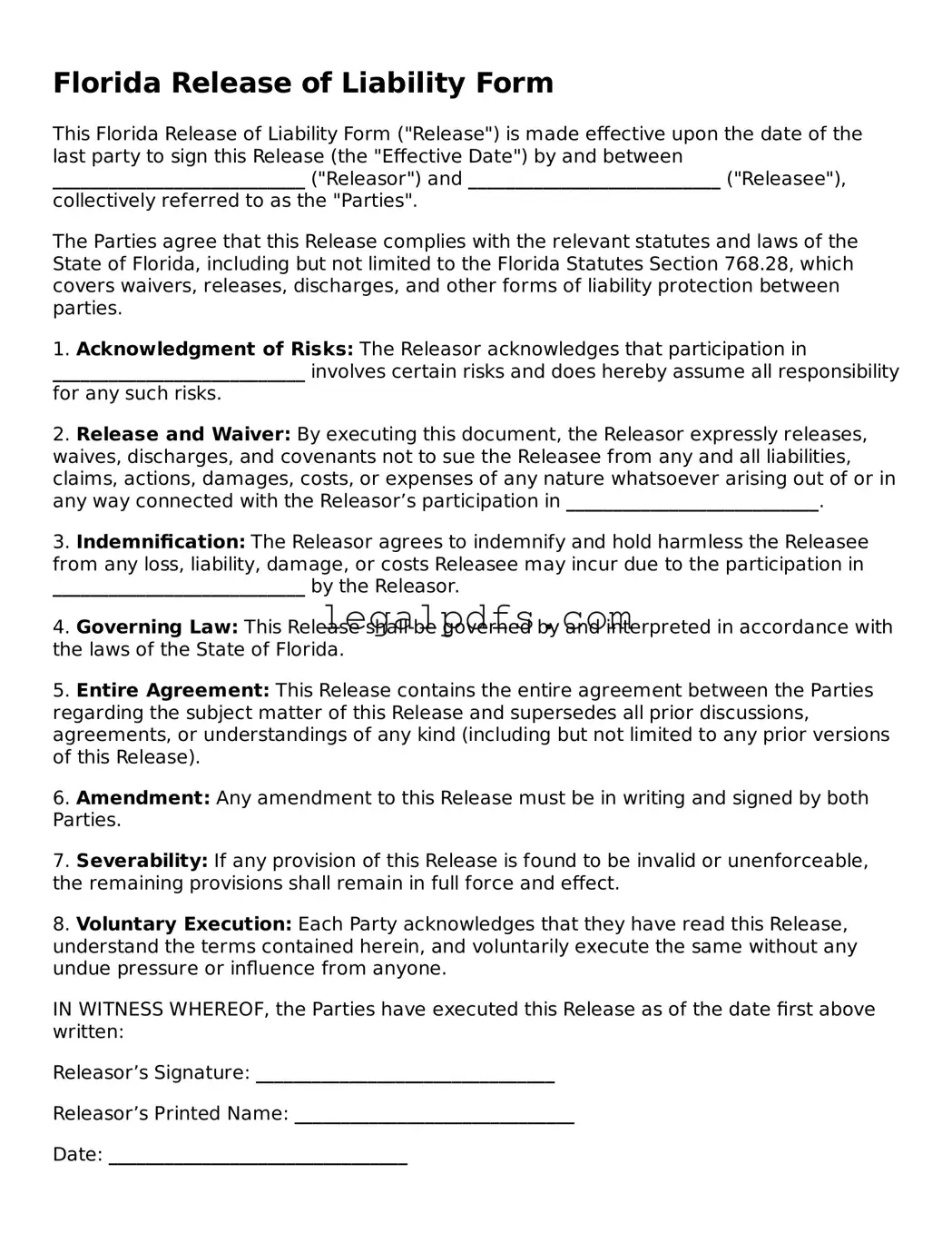Florida Release of Liability Form
This Florida Release of Liability Form ("Release") is made effective upon the date of the last party to sign this Release (the "Effective Date") by and between ___________________________ ("Releasor") and ___________________________ ("Releasee"), collectively referred to as the "Parties".
The Parties agree that this Release complies with the relevant statutes and laws of the State of Florida, including but not limited to the Florida Statutes Section 768.28, which covers waivers, releases, discharges, and other forms of liability protection between parties.
1. Acknowledgment of Risks: The Releasor acknowledges that participation in ___________________________ involves certain risks and does hereby assume all responsibility for any such risks.
2. Release and Waiver: By executing this document, the Releasor expressly releases, waives, discharges, and covenants not to sue the Releasee from any and all liabilities, claims, actions, damages, costs, or expenses of any nature whatsoever arising out of or in any way connected with the Releasor’s participation in ___________________________.
3. Indemnification: The Releasor agrees to indemnify and hold harmless the Releasee from any loss, liability, damage, or costs Releasee may incur due to the participation in ___________________________ by the Releasor.
4. Governing Law: This Release shall be governed by and interpreted in accordance with the laws of the State of Florida.
5. Entire Agreement: This Release contains the entire agreement between the Parties regarding the subject matter of this Release and supersedes all prior discussions, agreements, or understandings of any kind (including but not limited to any prior versions of this Release).
6. Amendment: Any amendment to this Release must be in writing and signed by both Parties.
7. Severability: If any provision of this Release is found to be invalid or unenforceable, the remaining provisions shall remain in full force and effect.
8. Voluntary Execution: Each Party acknowledges that they have read this Release, understand the terms contained herein, and voluntarily execute the same without any undue pressure or influence from anyone.
IN WITNESS WHEREOF, the Parties have executed this Release as of the date first above written:
Releasor’s Signature: ________________________________
Releasor’s Printed Name: ______________________________
Date: ________________________________
Releasee’s Signature: ________________________________
Releasee’s Printed Name: ______________________________
Date: ________________________________
